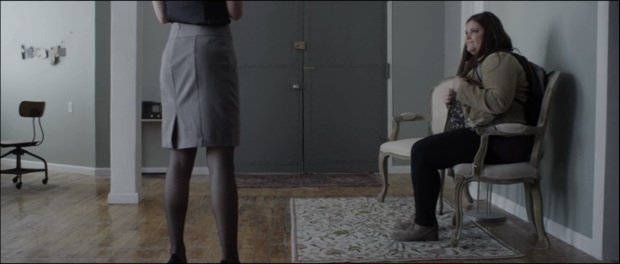[CW: racism. Unless I’m speaking specifically about one of the films, actors are credited thus: (Actor in Original/Actor in Remake). –TR]
I’m sure John Waters has scoffed at people who try to ascribe a specific political angle to his films, but I can’t help myself. His outsider characters make me feel empowered by their vibrant, unapologetic weirdness. Hairspray’s Tracy Turnblad (Ricki Lake) is probably the most whitebread example of this character, but also one of the most lovable. Tracy is a fat white teenage girl growing up in Baltimore in the Civil Rights Era. Her family is working class, but she dreams of fame. Her dancing skills lead to her being cast on The Corny Collins Show, an American Bandstand-style pop music and dance show, she becomes an ally to the black cast members who want the show to be de-segregated. The film was adapted as a Broadway musical in 2002, which was made into a 2007 film starring Nikki Blonsky as Tracy and John Travolta as Edna Turnblad, a role originated by Divine. Wanting to see how Hairspray’s portrayal of fatness changed after being elevated into the elite subgenre of films based on musicals based on films, I watched the two films back to back.

Ricki Lake as Tracy Turnblad, 1988
I almost put this project aside before it began. Tracy’s size and indefatigable spirit are essential parts of the story; I couldn’t imagine that much could change. And yet, here we are. The characters and story remain intact for the most part, but there is a noticeable change in how both fatness and race are portrayed. The gains in nuance come with the loss of spirit, unfortunately, making the two Hairsprays into narratives that are complementary in their shortcomings.

Nikki Blonsky as Tracy Turnblad, 2007
Tracy Turnblad is one of my favorite fat film characters. She doesn’t let anything hold her back or stop her from being “big, blonde, and beautiful.” Rich snob Amber von Tussle (Colleen Fitzpatrick/Brittany Snow) makes cruel comments about her weight, but Tracy still becomes a wildly popular public figure and wins the love of heartthrob Link Larkin (Michael St. Gerard/Zac Efron). It’s an idealized situation for a fat woman in the 1960s. The 2007 remake is more explicit about the effect of sizeism on its characters: Velma (Michelle Pfeiffer) refuses to hire Tracy for The Corny Collins Show because she’s fat, Tracy misunderstands something that Link says as a dig at her size. Most of the added treatment of characters’ fatness in the remake is attached to Tracy’s mother. John Travolta’s Edna is very insecure about her weight, to the point where she hasn’t left the house in 10 years because she doesn’t want the neighbors to see the weight she’s gained in that time.
Granted, the remake’s treatment of fatness is more grounded in reality. Edna’s subplot reflects a tenet of fat acceptance: rejecting the idea that a fat person must put their life on hold until they achieve a certain weight. It’s important to have narratives that reflect the struggle that many fat people have in accepting themselves and navigating a world that dismisses them based on their size, but that hardly has to be every narrative about fat people. Fat characters who are doing their thing without angst or apology can be just as powerful; the optimism inspired by an idealized setting can mean as much as a more relatable tale. During her audition for The Corny Collins Show Ricki Lake’s Tracy construes her size as a boon, saying that she would be relatable to home viewers who are “pleasantly plump or chunky.” Divine’s Edna similarly charges into the role of Tracy’s agent with no worry that people might not take a fat housewife seriously. The closest the remake comes to the original’s gleeful distortion of stereotypical depictions of fat people is Edna’s self-acceptance being conflated with her appetite (“You can’t stop my knife and fork when I see a Christmas ham,” she sings confidently during the finale). Instead of being completely unapologetic about her deviance from expectations around beauty and propriety and moving forward with the rest of the film, as Divine’s Edna is, Travolta’s Edna starts the film as a sad fat stereotype, gets permission from Tracy, Maybelle, and her husband (Christopher Walken) to accept herself, and blossoms into a more comical fat stereotype. Considering the amount of time the remake gives to Edna’s transformation, the results are disappointing.
Hairspray lacks much of Waters’ signature filth compared to his other films, but it’s hardly sanitized; this is evident when compared to the remake. One of my favorite scenes from the original film is the Hefty Hideaway ad spot. Mr. Pinky (Alan J. Wendl), owner of the plus-size boutique, hires Tracy as his spokesperson. It’s a moment that finds subversive power through the gleeful embracing of stereotypes. Mr. Pinky keeps his store stocked with pastries. “Eat up, girls, eat up,” he encourages his customers, “Big is beautiful!” His commercial spot on The Corny Collins Show features Tracy modelling a chic ensemble, picking up a pink frosted pastry from a display at the end of the runway and taking a bite. The modified exchange in the remake suggests a more comfortable approach to a fat-safe space for audiences. The ad spot is gone. During her visit to the Hefty Hideaway, Mr. Pinky (Jerry Stiller) hands Tracy a platter of donuts, which she hands off without taking one, showing that she’s a “good fatty” with self-control. The underlying current of lasciviousness is redirected into Mr. Pinky trying to guess Edna’s bra size, and his glee when she reveals that she is a few cup sizes larger than he had assumed. The remake, presumably trying to give respectability to fatness the original does not, ends up repeating a regressive trope of fat women’s desirability being chalked up to larger breasts.
Although Tracy is white, the story’s action is largely propelled by racism. The main conflict of the film is the struggle to integrate The Corny Collins Show, which has an all-white cast except for the monthly “Negro Day,” hosted by Motormouth Maybelle (Rita Brown/Queen Latifah). By prioritizing Tracy’s perspective as she stands in solidarity with her black friends, Hairspray inescapably becomes a white savior narrative, which dramatically limits the impact of its critique of the racism it depicts. The remake tries to compensate by increasing the focus on the black characters’ experiences with racism, but fails to give life to these moments without the original’s unruly, rebellious spirit and ultimately proves an ineffective counterbalance to the original film’s shortcoming.
The remake infuses a Message into the story by equating the struggles of fat people with those of black people. Tracy supports Maybelle, Seaweed (Elijah Kelley) and Little Inez (Taylor Parks) because she relates to them as someone else who is “different,” and not seen on television. Tracy’s sense of solidarity being due to ability to connect her personal struggles with those of others is an important element in stories about struggles for justice that isn’t emphasized in the original. However, the film brings that equation into areas where it doesn’t really work. In one scene that neatly synthesizes stereotypes about both fat people and black people, Edna is reluctant to allow Tracy to hang out at Maybelle’s record store, but is won over by a spread of fried chicken, cornbread, and collard greens during the sexy “Big, Blonde and Beautiful” number.
As with fatness, the remake sanitizes the original’s treatment of race. The original seeks to align the audience’s empathy with the black characters and against the racist white grownups. The satirical depiction of racist attitudes (presumably the ones John Waters heard growing up) doesn’t pull any punches. Velma (Debbie Harry) and Amber try to discredit Tracy by insisting that she is “mulatto”. Mrs. Pingleton panics when she has to walk through a black neighborhood, and we are cued in to the degree of her bigotry by a tribal drumming score. These moments are scrubbed out of the remake. All three antagonists are still assholes, but taking them out of the tasteless, ridiculous light cast by the original only serves to soften the ugliness of their behavior. Depictions of racism are also far less subtle. The remake addresses cultural appropriation through a scene where Velma gets angry at the Dynamites for singing a song they wrote on Negro Day because it had previously appeared on a white episode. This is a far more direct illustration than the original, where Link smarmily informs Tracy, “our souls are black, though our skin is white.” Having realistic depictions of racism in the film while remaining family friendly creates a problematic need to gloss over certain aspects, such as police brutality. When Tracy is on the run from the police and seeks shelter at Maybelle’s house, the danger of police backlash Maybelle would risk (to say nothing of her children) is not even a consideration, because they’re so grateful for the allyship Tracy has shown the Negro Day cast for– what? a week?
Perhaps the most illustrative example of how each film regards outsiders is in the contrast of how the outsiders are portrayed attempting to demonstrate political power. The protests in the original film are spontaneous, energetic, and disruptive, but their purpose changes from integrating The Corny Collins Show to freeing Tracy when she is sent to reform school. The remake sees Tracy joining the black community for a somber candlelight march while Maybelle sings the slow, soulful “I Know Where I’ve Been.” The focus stays on integration, which reduces the problematic aspects of the white savior narrative, but is also devoid of the flamboyant energy that pervades the other scenes. Abruptly changing the tone of the film to express the black characters’ call for integration feels oddly distancing, as though the scene was added out of a sense of obligatory liberalism, and frames political protest as something that is not only rigidly somber, but embalmed in a specific point in history (i.e. the Sixties, when the Baby Boomers fixed everything before moving on to middle management positions). A more vivacious protest scene would not only be better suited to a group of teenage dancers demanding their rightful place in rock ‘n roll, but would also be more engaging for the audience.
The moment that best overlaps the spirit of the original Hairspray with the sensibility of the remake is during the climax of the latter, when Inez forces her way onstage during the Miss Hairspray pageant and gains more votes for her dance moves than either Amber or Tracy. By unapologetically ignoring the arbitrary and stifling rules put in place by white authority figures, Inez expresses herself and achieves her dream of dancing on The Corny Collins Show. Her victory isn’t hers alone, though: it is a victory for her marginalized community, and raises the happy ending above individual gain to large-scale progressive change. But if the remake wants to take the civil rights aspect of the story more seriously, why not step away from the white savior narrative altogether and make Inez the protagonist? Tracy Turnblad is an amazing fat heroine, but not an appropriate once for a story about racism.












